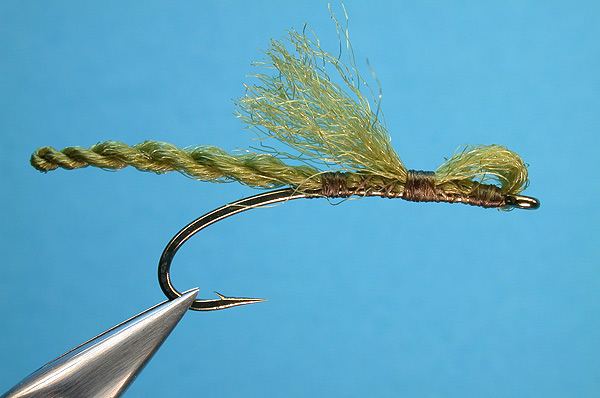Furled Damsel

Generic imitation for our “Narrow-Winged” Damsels (of which there are approx. 75 different species). Best represents the Genus Enallagma commonly called “Bluets”, and Genus Argia commonly known as “Dancers.” Typically range in size from 1 - 1 ¼ inches overall.
…Civil Bluet, Enallagma civile ; N. America (species with the widest distribution)
Note #2: I prefer to fish this pattern as a slow sinking sub-adult. On occasion I’m faced with a scenario that requires the damsel to float in the surface film… to achieve this I use some flies that were soaked in “Hydrostop” (Loon Outdoors Products). After tying a fly, I soak the pattern for a few moments in floatant, and then dry it completely before adding it to my field collection. If you’d rather not treat the fly with floatant, you could always add a small piece of foam atop the shank (just before you create the head and wings).
K. Hanley design (original created / 2005)